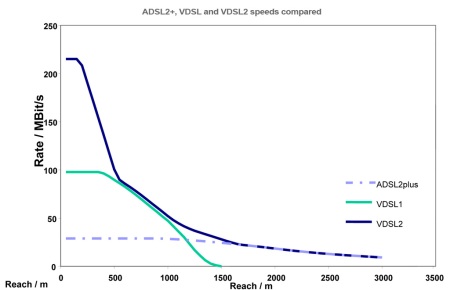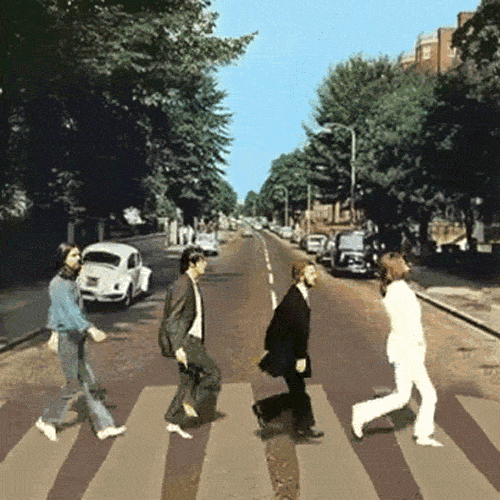Thursday, December 29, 2016
Fail-Safe Nuclear Power
Cheaper and cleaner nuclear plants could finally become reality—but not in the United States, where the technology was invented more than 50 years ago. Over the next two decades China hopes to build the world’s largest nuclear power industry.
Plans include as many as 30 new conventional nuclear plants (in
addition to the 34 reactors operating today) as well as a variety of
next-generation reactors, including thorium molten-salt reactors,
high-temperature gas-cooled reactors (which, like molten-salt reactors,
are both highly efficient and inherently safe), and sodium-cooled fast
reactors (which can consume spent fuel from conventional reactors to
make electricity).
Thursday, December 22, 2016
Sunday, December 18, 2016
Why not FTTN?
FTTN, while an incremental improvement on what we have now, is a short-sighted waste of time and money that will still leave Australia lagging behind the rest of the developed World, squandering billions of dollars on obsolete technology in the process.
The Concise explanation
• FTTN is a short-term “stop gap” using old technology
• Most countries that have installed FTTN are now replacing it with FTTP (ie: To the same system as our original NBN plan)
• The investment in FTTN would be largely wasted when the inevitable upgrade to FTTP is required
• FTTN would be almost as expensive to implement in Australia as FTTP
• FTTN’s Speed-to-Price ratio is poor
• FTTN delivers vastly different performance levels depending on location
• FTTN delivers very low upload speeds
The Detailed explanation:
FTTN is a short-term, “stop gap”, using old technology
FTTN is not a new technology, having been
rolled out in many areas of the World for over 5 years. Indeed, Telstra
proposed this technology for Australia way back in 2005, but their
pricing and competition model was rejected by the ACCC, and they decided
not to proceed. If they had decided to proceed, there’s no doubt that
the urgent need for the NBN would be greatly reduced. FTTN was certainly
excellent technology for 2005.
But we are now in 2011. The short
effective life of FTTN is becoming apparent, and countries which
previously installed FTTN systems (like Germany, New Zealand and the UK)
are now gradually replacing their networks with Fibre to the Premises
(FTTP).
So Malcolm Turnbull is effectively
suggesting that we roll out a cheaper, short-term network instead of
leap-frogging it for the NBN. He’s suggesting we roll out a network that
other countries have already decided is inadequate, and are
replacing. And that is the first crux of the FTTN debate: It is
unarguably a stop-gap solution. Even manufacturers of FTTN equipment say
this, admitting they expect FTTP to be the standard within 10-15 years.
Given that it will take 10 years to roll
out FTTP in Australia, to step backwards to FTTN at this stage would be
an incredible waste of time and money.
In New Zealand, their relatively new FTTN network only delivers an average peak speed of 13Mbps
for its users. This is only 40% higher than the current average speed
available in Australia, and a fraction of the initial speeds available
over a full FTTP network.
FTTN isn’t really a pathway to later
upgrades to FTTP. Most of the systems deployed for FTTN will not be
reused, and so would be wasted. FTTP uses about 1/3 the number of street
cabinets as FTTN, and those cabinets are about 1/4 the size of FTTN
cabinets (Think esky versus refrigerator). FTTP nodes
also don’t require electrical power, unlike FTTN cabinets. All of the
DSL systems that go along with FTTN are also wasted.
All of the considerable labour costs of
rolling out FTTN, such as fibre installation, cabinet installation,
electrical labour, fibre splicing, copper upgrades etc are all wasted
when moving to FTTP. Worse, it will cost more money to remove the redundant FTTN architecture and electrical systems when FTTP is rolled out.
The only portion of an FTTN network that
could potentially be reused would be sections of the fibre run to the
nodes. But even this would have to be cut, added to, re-spliced and
extensively modified to upgrade to an FTTP system.
In other words, FTTN will cost money to
roll out, have a short useful life, and cost more money to remove and
replace. Of the estimated network cost of FTTN of about $15 billion,
almost none adds any value or reduces the expense of a future “upgrade”
to an FTTP system, so it’s money down the drain.
To quote Mark Newton from Internode:
“FTTN doesn’t bring FTTP any closer, but it does push it several billion dollars further away….there’s no upgrade path from one to the other. This notion that FTTN is a “stepping stone” to something else is pure fantasy. If an FTTN network is built you’d better like it, because it’ll be around for a long, long time to come.”In practise, FTTN would be almost as expensive to implement as FTTP
While in theory FTTN is a cheaper option,
that only applies if it’s done by the incumbent telecommunications
provider. In other words, Telstra. Without Telstra’s co-operation, an
FTTN network would likely cost almost as much as the NBN.
According to The Australian Government,
assorted communications consultants, and former Telstra executives
interviewed for a 4 Corners programme on the NBN, the total cost of an
FTTN network covering ~95% of Australia would have been $30-35 Billion
dollars. This comprised $15 billion for the network construction, plus a
further $15-20 billion for compensation to Telstra for taking their copper network.
Considering the total NBN cost is $36
billion (including several billion for rural wireless and satellite
services), spending $30-35bn on a vastly inferior FTTN system is hugely
inefficient, without even considering the fact that additional funding
would be required for wireless and/or satellite services for the final
~5%.
FTTN’s Speed-to-Price ratio is poor
To support his argument, Malcolm Turnbull
cites a 2007 Alcatel Lucent paper entitled “Deploying
Fiber-to-the-Most-Economic Point”.
Even leaving aside the cost of procuring
Telstra’s copper network (discussed above), the paper reveals that to
deliver a 25Mbps FTTN network would cost 50% of delivering a 72Mbps FTTP
network. In other words FTTN is far more expensive than FTTP on a
cost-per-megabit scale, costing 50% less money but delivering only 35%
of the performance.
The paper also reveals that deploying
FTTP in greenfield estates (ie: new housing developments) costs the same
as FTTN. In fact, it specifically says “The lowest cost solution
with the highest bandwidth in a greenfield, single dwelling unit
application is PON (FTTP)…. Due to its bandwidth superiority, PON should
be deployed in greenfield, single dwelling unit situations with rare
exception.”
For Brownfield overbuild situations (ie: existing premises), it’s support of FTTN is based on three major assumptions:
1. It assumes that there is no cost to access the existing copper network; and
2. That it is only suitable for “modest bandwidth needs, [of] less than 40 to 50 Mb/s”; and
3. That it’s
suitability is “predicated on the maximum anticipated distance between
the subscriber termination and FTTN system…[being] kept within
the acceptable limits of rate versus reach”.
In other words, Malcolm’s plan doesn’t
make any economic sense whatsoever. Any Government plan requires payment
to Telstra to access the existing network, adding costs. There is no
chance that a network providing “less than 40Mbps” will meet
requirements in 10 years time, and in our sprawling suburbs, the chance
of keeping nodes within the “acceptable limits of reach and rate” are
very slim, and add additional costs.
FTTN delivers vastly different performance levels depending on location
While FTTP is essentially unaffected by
distance, the same cannot be said for FTTN. For that system, the
achievable speed is all about distance. Take a look at this graphic,
showing the speed dropoff of various DSL technologies over distance:
The above speeds for VDSL2 assume 2 pairs
of copper wire (known as bonding), which most homes in Australia don’t
have and VDSL1 speeds are over coaxial cable. They should be
(approximately) halved for a single copper pair. Therefore:
• At 100m, FTTN could deliver about 100Mbps
• At 500m, that drops to about 50Mbps
• At 1km, it drops to about 25Mbps
Remembering that the distance is the
actual copper length (not as the crow flies), a typical FTTN system
would deliver maximum speeds of less than 25Mbps, which is in line with
the NZ experience of 13Mbps average.
FTTN delivers very low upload speeds
One of the major drawbacks of FTTN is
upload speeds. In the case of ADSL2+ FTTN deployments, these are a
maximum of about 3Mbps. In the case of VDSL2 FTTN systems, they are
typically about 8Mbps. Again these speeds are dependent on distance, so
the further you are from the nose, the lower the speeds become.
The NBN will offer upload speeds of up to 400Mbps.
The importance of upload speeds is often
overlooked, but it is a vital component of any interactive broadband
connection. Whether it be two-way, high quality video communication
(such as for conferencing, eHealth or remote learning), for cloud
computing services/remote backups, or for telecommuting.
FTTN does not provide sufficient upload
speed for any of these services to be delivered effectively, especially
as file sizes and bandwidth requirements grow into the future.
The Bottom line
FTTN would have been a great idea 10 years
ago. But now, it’s out of date. Countries around the World are already
beginning to replace their FTTN networks with FTTP. The NBN is our
opportunity to leapfrog these countries, and save the billions of
dollars associated with the double-upgrade. Economists have been suggesting we do this since 2007!
FTTN, while an incremental
improvement on what we have now, is a short-sighted waste of time and
money that will still leave Australia lagging behind the rest of the
developed World, squandering billions of dollars on obsolete technology
in the process.
Thursday, December 15, 2016
Frog in Boiling Water Fable
If you plunge a frog into boiling water, it will immediately jump out. But if you place the frog into cool water and slowly heat it to boiling, the frog won’t notice and will slowly cook to death. So claims the myth. Indeed, everyone—from corporate consultants to politicians to environmental activists—cites the frog fable as proof that people often don’t see change happening and cannot deal with it in the aftermath.
As with most myths the facts simply don't line up with reality, read more here: http://conservationmagazine.org/2011/03/frog-fable-brought-to-boil/
Thursday, December 8, 2016
White Australian Christian Terrorist
That's ol' mate Phillip Galea on the left (stay classy..)
Nothing to see here, no Muslims involved just a white guy doing white guys things. Move along. You will be informed if you are required to become inflamed to hatred by the Murdoch press.
More here: https://www.theguardian.com/australia-news/2016/aug/07/terrorism-raids-arrested-man-believed-to-be-a-member-of-reclaim-australia
Friday, August 26, 2016
Sandle Socks (So Bad They're Good)
Yes folks, they're real. So unfortunately: these exist and I know people that would appreciate these for Christmas. FML
Friday, August 19, 2016
Friday, August 12, 2016
Friday, August 5, 2016
Friday, July 29, 2016
Friday, July 22, 2016
The D B Cooper Mystery
The FBI this month officially ceased the investigation into the infamous D. B. Cooper hijacking that occurred over 45 years ago.
A quick recap: In 1971, a man who called himself Dan Cooper hijacked a passenger plane from Oregon to Seattle where he freed the 36 passengers in exchange for $200,000 in cash. As the nearly empty flight took off again, flying south, he parachuted out of the airplane with the ransom, and was never seen again.
More here: https://en.m.wikipedia.org/wiki/D._B._Cooper
Monday, July 18, 2016
Think eVoting is a Good Idea? Think Again.
It's time to call BULLSHIT on e-voting. Look, we already have the most secure, fair and inclusive voting system in the world. It's really no wonder that it's actually called the "Australian System".
So, no, it's not broken and no, it doesn't need to be fixed.
Read more here: The Guardian - Lets put e-voting where it belongs: on the trash heap of bad ideas
So, no, it's not broken and no, it doesn't need to be fixed.
Read more here: The Guardian - Lets put e-voting where it belongs: on the trash heap of bad ideas
Saturday, July 16, 2016
Friday, July 15, 2016
Have You Ever Wondered Why Cats Love To Hide In cardboard boxs?
Have You Ever Wondered Why Cats Love To Hide In cardboard boxes? No, me either. So its a good thing that the folks over at the Faculty of Veterinary Medicine, University of Utrecht, have done all the heavy lifting for us. They studied stress in shelter cats and found that hiding boxes reduced stress, at least on the short term.
More here: http://phys.org/news/2015-02-cat-stress-access.html
from the Faculty of Veterinary Medicine, University of Utrecht, studied stress in shelter cats and found that hiding boxes reduced stress, at least on the short term.
Read more at: http://phys.org/news/2015-02-cat-stress-access.html#jCp
Read more at: http://phys.org/news/2015-02-cat-stress-access.html#jCp
from the Faculty of Veterinary Medicine, University of Utrecht, studied stress in shelter cats and found that hiding boxes reduced stress, at least on the short term.
Read more at: http://phys.org/news/2015-02-cat-stress-access.html#jCp
Read more at: http://phys.org/news/2015-02-cat-stress-access.html#jCp
from the Faculty of Veterinary Medicine, University of Utrecht, studied stress in shelter cats and found that hiding boxes reduced stress, at least on the short term.
Read more at: http://phys.org/news/2015-02-cat-stress-access.html#jCp
Read more at: http://phys.org/news/2015-02-cat-stress-access.html#jCp
from the Faculty of Veterinary Medicine, University of Utrecht, studied stress in shelter cats and found that hiding boxes reduced stress, at least on the short term.
Read more at: http://phys.org/news/2015-02-cat-stress-access.html#jCp
Read more at: http://phys.org/news/2015-02-cat-stress-access.html#jCp
from the Faculty of Veterinary Medicine, University of Utrecht, studied stress in shelter cats and found that hiding boxes reduced stress, at least on the short term.
Read more at: http://phys.org/news/2015-02-cat-stress-access.html#jCp
Read more at: http://phys.org/news/2015-02-cat-stress-access.html#jCp
Sunday, July 10, 2016
17 Underseen Sci-Fi Films From Recent Years You Need To Watch
There are a number of films from the past ten years that may have been given high marks by critics but have been sorely underseen by audiences. Really looking forward to: The World's End.
More here: http://www.ranthollywood.com/2015/08/22/17-underseen-sci-fi-films-from-recent-years-you-need-to-watch/
Friday, July 8, 2016
Monday, July 4, 2016
Friday, July 1, 2016
David Bowie - Rare "Ziggy Stardust" Cassette Tape
Very rare and therefore very collectable cassette from Canada (yada, yada, yada). Hang on, that gives me an idea for my groovy new TV/Radio/Cassette combo...
Sunday, June 26, 2016
The Adverts - Gary Gilmores Eyes
Gary was actually quite keen to be executed as he was, after all, a complete nutter. Great clip from an important 70's punk band.
Friday, June 24, 2016
Saturday, June 18, 2016
Friday, June 17, 2016
Friday, June 10, 2016
The Photos - Do You Have Fun
The Photos are one of those bands that you just wish had really made it big. Their debut album was a cracker but a series of unfortunate events conspired to prematurely end their career. Anyhow, enjoy this nugget. (Wendy Wu - whoo hoo!)
Friday, June 3, 2016
Tuesday, April 5, 2016
Thursday, March 17, 2016
Wednesday, March 16, 2016
Monday, March 14, 2016
Saturday, March 12, 2016
You Can't Make This Stuff Up (No One Would Believe you)
I'm guessing this is: Person dressed as banana...
From the Herald Sun article: "Person dressed as banana disrupts Mitchell Shire Council meeting", quote: "I asked this person to stop but they continued to hand out bananas to people so I was left with no choice but to adjourn the meeting," Cr Marstaeller said.
Wednesday, March 9, 2016
Wednesday, March 2, 2016
Gosh A Wooden Hand Cranked Instrument Runs ON 2000 Marbles
You need to see this to believe it. Also: very cool techno tune.
Read the full article here: http://gizmodo.com/wooden-hand-cranked-instrument-runs-on-2-000-marbles-1762354800
Saturday, February 6, 2016
Saturday, January 23, 2016
RAGEagain
Wednesday, January 13, 2016
Sunday, January 10, 2016
Subscribe to:
Posts (Atom)
























